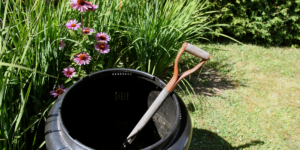Eco-Friendly vs. Sustainable: Understanding the Key Differences
In the world of environmental awareness, terms like ‘eco-friendly’ and ‘sustainable’ are often used interchangeably, but they have distinct meanings and implications. Understanding these differences can help you make informed decisions that truly benefit the planet.
What Does ‘Eco-Friendly’ Mean?
‘Eco-friendly’ refers to products, actions, or practices that do not cause harm to the environment. This means reducing negative impacts, such as pollution or carbon footprint, by using fewer harmful materials or resources. For example, an eco-friendly product might be made from natural, non-toxic ingredients that are safer for both people and the environment.
The goal of eco-friendly practices is to minimize harm, but it doesn’t necessarily ensure long-term resource sustainability. While an eco-friendly product might reduce immediate environmental impact, it may not address the broader issues of resource depletion or long-term ecological balance.
What is Sustainability?
Sustainability goes beyond reducing harm—it involves creating a system that can maintain itself over the long term. Sustainable practices consider not only environmental health but also social and economic factors. The idea is to ensure that resources are used in a way that allows future generations to meet their needs without compromising the planet’s health.
A sustainable product, for example, might be made with materials sourced in a way that ensures they can be replenished, without negatively affecting ecosystems or communities. Sustainability takes a holistic approach, aiming for a balance that benefits the environment, society, and economy.
Key Differences Between Eco-Friendly and Sustainable
- Focus: Eco-friendly focuses primarily on reducing immediate environmental harm, while sustainability emphasizes maintaining balance over the long term.
- Scope: Eco-friendly products might lower pollution or reduce toxic chemicals, but sustainability considers the full lifecycle of products, including production, usage, and disposal.
- Long-Term Impact: Sustainable practices are designed with future generations in mind, ensuring that natural resources are not depleted and ecosystems remain intact.
Why Understanding the Difference Matters
Choosing between eco-friendly and sustainable options requires understanding your environmental goals. If your primary aim is to minimize immediate harm, eco-friendly products may be suitable. However, if you want to contribute to long-term ecological and societal health, focusing on sustainability is essential.
Practical Examples

- Eco-Friendly Example: A biodegradable dish soap that breaks down into non-toxic elements after use.
- Sustainable Example: A bamboo toothbrush, where bamboo is harvested in a way that doesn’t lead to deforestation, ensuring it can continue to grow and provide resources.
Eco-Friendly vs Sustainable: Key Comparisons
To truly make a positive impact, it helps to think both eco-friendly and sustainable. Choose products that reduce immediate harm and consider the bigger picture—ensuring that resources and ecosystems are protected for years to come.
Frequently Asked Questions
What is the main difference between eco-friendly and sustainable?
The main difference lies in the scope: eco-friendly focuses on reducing harm to the environment in the short term, while sustainability aims for a balanced system that benefits future generations.
Can something be both eco-friendly and sustainable?
Yes, many products and practices can be both. For example, renewable energy sources like solar power are eco-friendly because they reduce pollution and sustainable because they don’t deplete natural resources.
Final Thoughts
Understanding the nuances between eco-friendly and sustainable is crucial in making informed decisions that truly benefit the planet. Whether it’s reducing immediate harm or ensuring long-term balance, each choice you make can contribute to a healthier, more resilient world.
By embracing both concepts, we can work toward a future that not only protects but also nurtures the environment for generations to come.
References:
For more information on sustainable practices and eco-friendly products, consider visiting Google’s Guide on Sustainability or consult resources like the United Nations Sustainable Development Goals.






